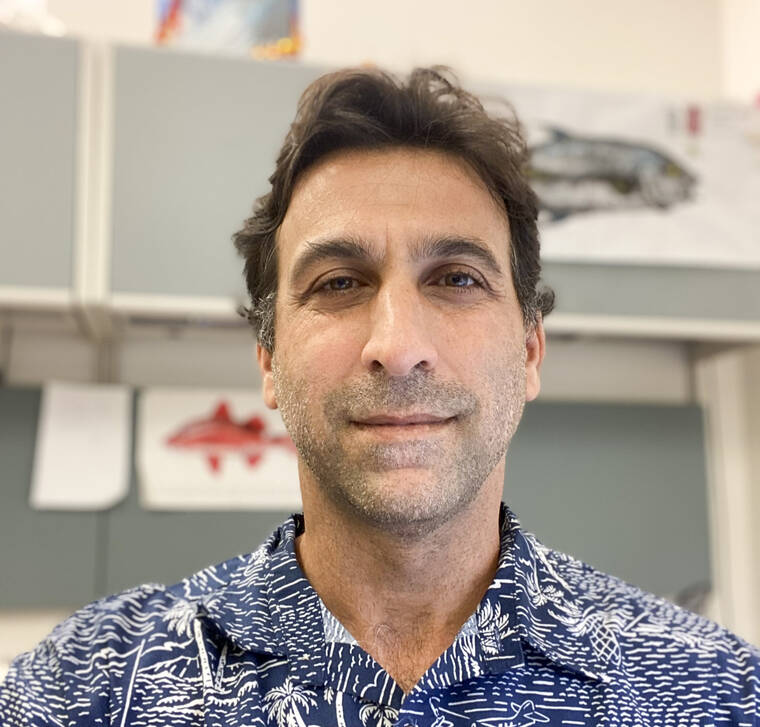Pregnant women in Hawaii are very likely to have plastic fragments in their placentas, University of Hawaii researchers have discovered, raising further concerns about the long-term health implications of microplastics.
Microplastics, pieces of plastic ranging in size from 5 millimeters to a single micron, are formed from the gradual breakdown of plastic products around the globe and are generally understood to have been embedded into the tissue of most people on the planet after decades of plastic proliferation.
In recent years, scientists have found microplastics in samples of people’s lungs, blood, breast milk and placentas. But in November, researchers at UH’s John A. Burns School of Medicine and the Kapiʻolani Medical Center for Women & Children in Honolulu discovered that the presence of plastics in the placenta is more widespread than initially thought.
Dr. Men-Jean Lee, an obstetrician and researcher at JABSOM and Kapiʻolani Medical Center, said she and other researchers took 30 placenta samples — 10 each selected from samples donated to JABSOM in 2006, 2013 and 2021 — to check for the presence of microplastics.
Of the 2006 samples, plastic was found in six of them, and nine of the 2013 samples had microplastics.
All 10 of the 2021 samples were found to contain microplastics.
Dr. Rodrigo Weingrill with UH-Manoa’s Institute for Biogenesis Research said the plastics discovered in the samples tended to be the types found in everyday household items made from polypropylene, polyethylene, polyvinyl chloride or PVC. While the samples were associated with healthy, normal pregnancies, he said it still is unclear how thoroughly the plastic contaminants had infiltrated the mothers’ bodies.
“The next part of our research is going to be whether the plastics are able to cross over from the placenta into the fetus through the umbilical cord,” Lee said, adding that the research team has received a $200,000 grant from the National Institutes of Health to pursue that line of investigation.
Weingrill said microplastics generally enter the human body through three routes: inhalation, ingestion and absorption through the skin. From all three routes, the particles can enter the bloodstream and become embedded and accumulate in other tissues.
“It’s like gold mining,” Weingrill said. “The heavier particles go down the river and accumulate. … But we don’t know if they’re ending up in the placenta or other tissues as their final destination.”
Weingrill added that the placenta is “highly vascularized” — that is, contains a lot of blood vessels — and so it makes sense that plastics in the bloodstream might end up there.
Lee compared the placenta to a sieve or colander that acts as a filter to protect the fetus from microorganisms, but noted that she doesn’t know if that filter is strong enough also to keep out microplastics.
Even if it is, Lee said microplastics can break down further into chemicals that likely can filter through the placenta to the fetus. Those chemicals can include phtalates, known endocrine disruptors that can impact a person’s hormonal production with potentially long-term effects.
“We’re not trying to be alarmist, but this research is the first step in educating people about these issues, about what plastics they’re using,” Weingrill said.
The long-term health effects of microplastics within the human body are still yet to be fully understood, although some research papers cite potential impacts such as DNA damage, impaired immune response, metabolic disorders, and more.
Lee said the issue is another example of how climate change will directly impact human health, noting Hawaii is particularly susceptible to microplastic contamination considering sunlight, heat and salt — all abundant in Hawaii — are known to speed up the breakdown of common plastics.
Lee added that the state’s isolation creates an increased reliance on plastic packaging and has been exacerbated by a lack of local plastic recycling facilities.
With plastic waste so omnipresent, Lee said that long-term solutions will require broad legislative pushes to ban the use of more degradable plastic items, but added individuals can take steps now to limit their exposure.
“Our recommendation is that people don’t use single-use plastic water bottles, use refillable bottles,” Lee said. “If you do use a single-use bottle, don’t reuse it, and be sure to recycle it properly. … Also, don’t microwave food in plastic, microwave it in glass. … After you deliver your baby, breastfeeding is best, but don’t put formula or breast milk in a plastic bottle.”
Email Michael Brestovansky at mbrestovansky@hawaiitribune-herald.com.









